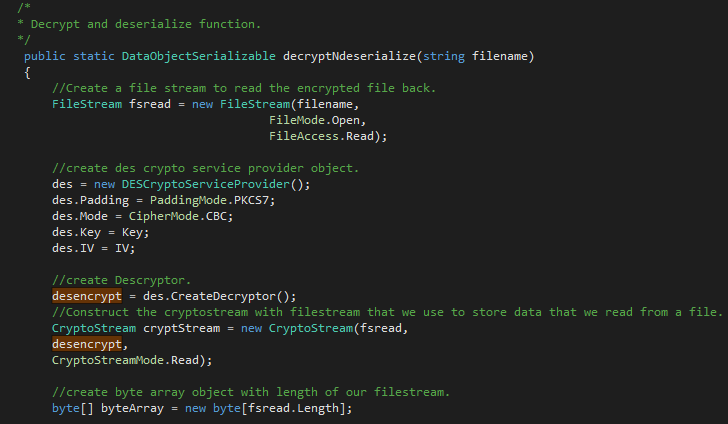

Var plaintext = (plain) Ībove code doesn't result in a correct result, though, so your input ciphertext is probably not a hex string. My initial reaction was why add the additional step of deriving a KEK to decrypt a key when you could just derive the original key. Thought that was mostly used when symmetric keys are encrypted with asymmetric keys.
ENCRYPTO DECRYPT KEY IV HOW TO
i think problem is my key and iv, but i dont no how to creat it pls hellp me String text JavaAESCipher.encrypt('123sadsad','1. Using the radio buttons under the Key input field, you can specify whether the entered key value should be interpreted as a plain text or a hexadecimal value. Not data encrypt only show Null, pls change code if any mistake. The ciphertextBlob that you specify must be the value of the CiphertextBlob field from a GenerateDataKey, GenerateDataKeyWithoutPlaintext, or Encrypt response, or the PrivateKe圜iphertextBlob field from a GenerateDataKeyPair or GenerateDataKeyPairWithoutPlaintext response. The use of public-key encryption to distribute secret keys. To decrypt a data key, use the Decrypt operation. There are actually two distinct aspects to the use of public-key encryption in this regard. One of the major roles of public-key encryption is to address the problem of key distribution. For public-key encryption, you must know either the public key (if the data was encrypted using the private key) or the private key (if the data was encrypted using the public key).

For secret-key encryption, you must know both the key and IV that were used to encrypt the data. I can't find a way to convert the byte-arrays to hex. 4 KEY DISTRIBUTION USING ASYMMETRIC ENCRYPTION. Decryption is the reverse operation of encryption. I'm trying to use Crypto.js but I can't find a way to use the supplied key and vector. I should be able to decrypt the string and get: I have a key, and a vector (iv) supplied to me in a byte-array format:


 0 kommentar(er)
0 kommentar(er)
